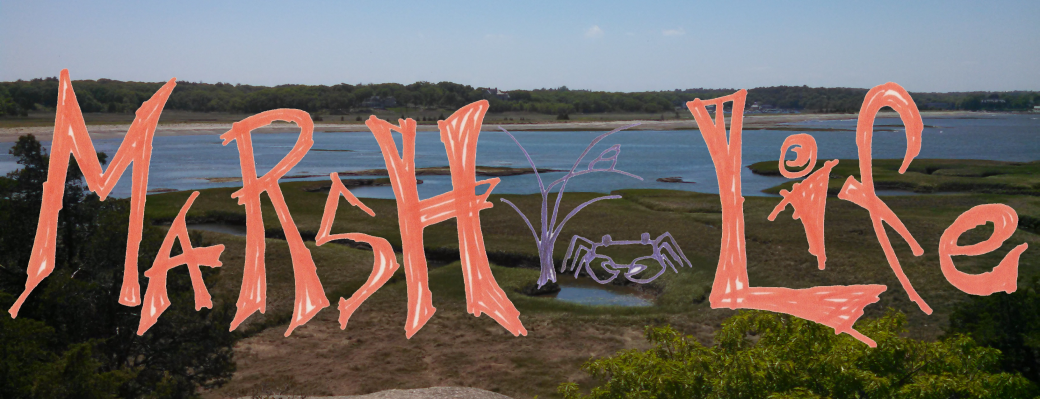Because of their location on the border of terrestrial and marine ecosystems, marshes act as sponges for runoff, are a factory that churns out millions of juvenile fish, crabs and shrimp, and are important buffers for storm protection. In turn, their position on the coast means that they are affected by species interactions from both terrestrial (e.g. birds, mammals) and marine (e.g. fish, crabs) habitats. For example, in Cape Cod salt marshes, overfishing has reduced the number of marine predators, such as striped bass and cod, causing population densities of the native, herbivorous purple marsh crab, Sesarma reticulatum, to increase across its natural range. Increased above and below-ground purple marsh crab grazing from these dense populations has caused massive die-off of the foundation species Spartina alterniflora and subsequent creek bank erosion (Holdredge et al. 2009, Coverdale et al. 2012). Recent experiments indicate that the exclusion of predators increases S. reticulatum grazing and subsequent erosion of marsh creek banks in Cape Cod (Altieri et al. 2012), but the specific predators that are responsible for reducing crab densities are unknown and likely vary from marsh to marsh.
Bird predators (above) and marine predators (below, green crab eating a tethered fiddler crab) are common in the marsh!
In Folgers Marsh near our UMass-Boston Field Station on Nantucket I am currently using a combination of surveys, tethering experiments, and a manipulative field experiment to answer the following questions: (1) What are the most common predators of creek bank invertebrates in Nantucket salt marshes? and (2) What is the relative importance of shorebird and marine predators on the community structure and ecosystem functioning of Nantucket marshes?
Using tethering experiments (tying common prey species to a fishing line and limiting their access to shelter during high tide) I will be able to find out the frequency and identity of predation events. Thus far, videos (which I will post later!) have revealed that green crabs (Carcinus maenas) and blue crabs (Callinectes sapidus) may be the most important predators on the purple marsh crab and on fiddler crabs. Blue crabs are by far a superior competitor and predator than green crabs, so I would speculate that purple marsh crab numbers would respond to increases in that voracious predator!
My field experiment will help understand the relative importance of predators that come in on the high tide (i.e. blue crabs, green crabs, striped bass, ect) and predators that hunt during low tide (i.e. oystercatchers, egrets, gulls, willets, whimbrels, ect). Salt marshes creek banks are lined with organisms that have different effects on marsh functioning; fiddler crabs increase grass productivity by aerating the soil and clearing dead material off the surface, ribbed mussels bind the sediment and stabilize grasses, purple marsh crabs (at low densities) help aerate soils through intricate burrowing but can overgraze banks if their populations grow. We know that all of these species are common prey items for birds and crabs and fish, but we don’t know how each of these predators affects these important creek bank organisms and, in turn, how that affects the ability for a marsh to protect us from storms, to filter our runoff, or to provide habitat for those commercial species we care about. More often than not, large scale changes to coastal ecosystems (e.g. removal of large predators, invasions, increased pollution) have cascading effects on the structure and function of the whole food web, and manipulative field experiments are an excellent way to understand these impacts. Check out some pictures of the experiment below!
Marine predator exclusion on the right and below and a marine and bird exclusion on the left (you can faintly see the fishing line and flashy tape I used to keep birds out ). In the marine predator exclusion, nets raise up on the high tide to exclude crabs and fish (below)




